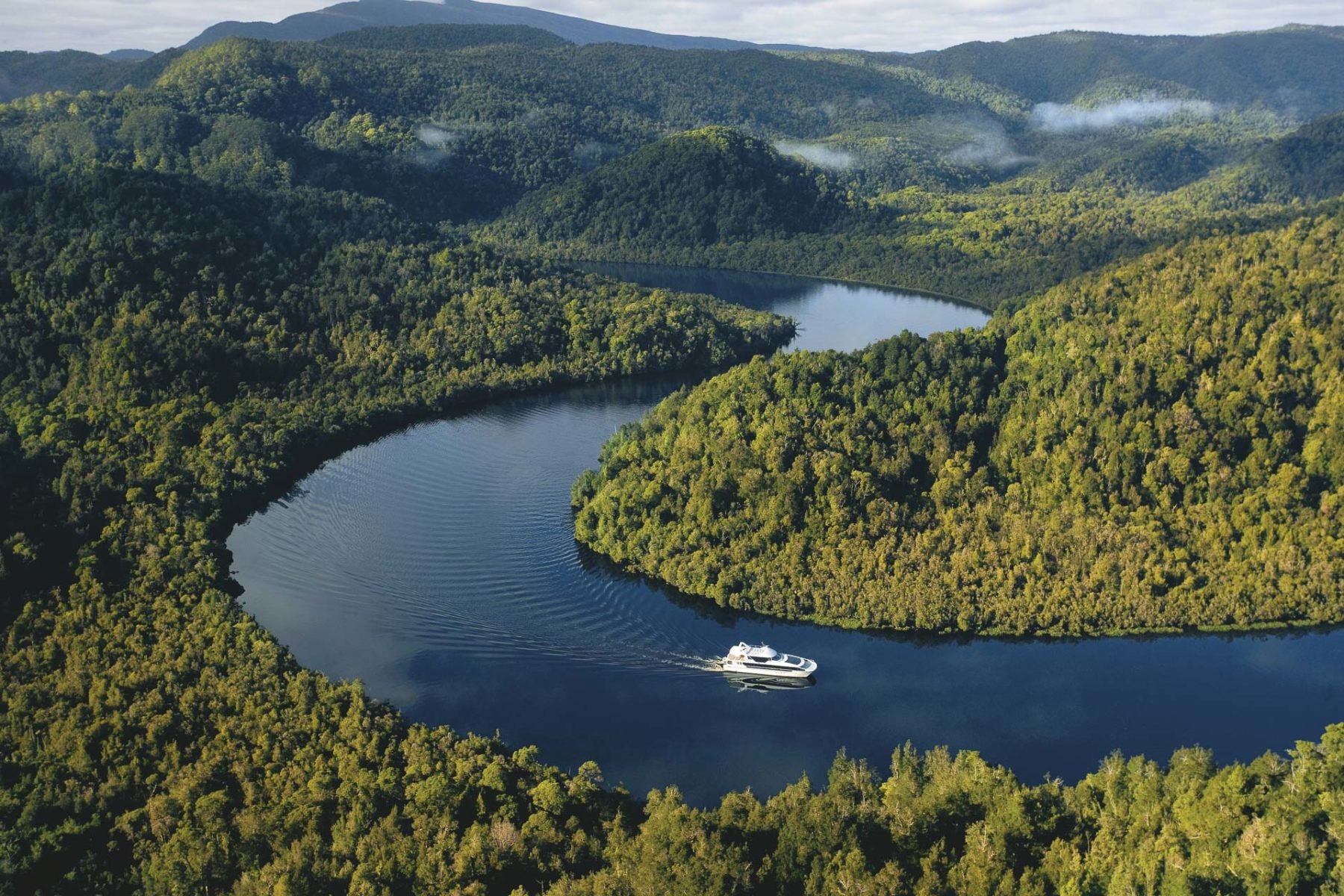The Tarkine: natural Tasmanian wonder

This place is wilderness. This place is the Tarkine. Occupying some 3500sq.km of the remote north-west of Tasmania, it’s uninhabited apart from a handful of holiday shacks. Bounded partly by two rivers, the Arthur to the north and the Pieman to the south, and the turbulent Southern Ocean to the west, the Tarkine is an island of land that has remained undeveloped because of its isolation. It bears the full brunt of the Roaring Forties, experiencing wild winter storms with winds of up to 180km/h; 10m waves often pound its shores, and the average annual rainfall is 1800mm.
The environment here is extraordinarily diverse. A jagged coastline is backed by a complex of shifting dunes that shelter freshwater lagoons and
wetlands. Smooth green marsupial lawns are surrounded by fragrant banksia, tea-tree and brightly coloured pigface. Behind the coast, the land rises gently to low coastal heathland and buttongrass plains where the Norfolk Range punctuates the landscape like a message written in braille. But it’s the forest that’s the heart of the Tarkine. Some 2400sq.km of it clothe the undulating country in the region’s east. Tall eucalypts dominate the drier areas, but in the wet, secluded hills and valleys are the Tarkine’s jewels. Here, largely unchanged since it was part of the supercontinent Gondwana 60 million years ago, is Australia’s largest contiguous tract of rainforest – one of only three remaining temperate rainforests in the world.
Covering 1700sq.km, it is dominated by myrtle beech, a magnificent tree that grows broad and tall and lives for more than 400 years. Sassafras, leatherwood and celery-top pine are also common, and below the forest canopy tree ferns flourish, interspersed with native laurel.
The Tarkine’s riverbanks are refuge for ancient Huon pines, perhaps 3000 years old. The forests and coastal plains are habitats for a host of vulnerable species like orange-bellied parrots and eastern pygmy-possums. Grey goshawks and Tasmanian wedge-tailed eagles nest here. In its whisky-hued rivers lives the primeval giant freshwater crayfish.
The Tarkine is the last refuge for all kinds of vulnerable species that are threatened elsewhere. Biologically important, it’s a really significant part of the beauty of the planet – beauty that can never be replaced.

DISCOVER TASSIE’S WILDERNESS
Joining a small-group organised tour of Tasmania’s wild areas is a great way to maximise your time in the Apple Isle. Outback Spirit’s 12-day Tasmania Wilderness Explorer starts and ends in Hobart, taking in Freycinet and Wineglass Bay, Bruny Island and Port Arthur before heading to the remote areas of north-western Tasmania, including Strahan, the Cradle Mountain area, Cape Grim, Stanley and back to Hobart via Launceston. The trip includes helicopter flights over Wineglass Bay, and adventure cruises around Bruny Island and along the remote Gordon River (left). Check the website for full details of itinerary, dates and prices.
Visit Outback Spirit.




